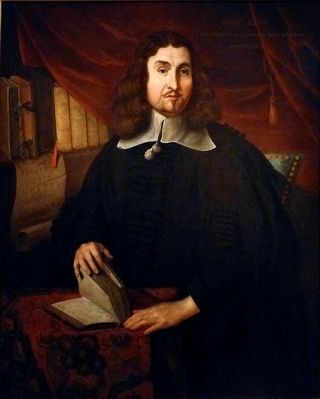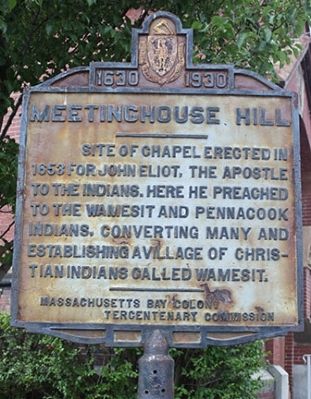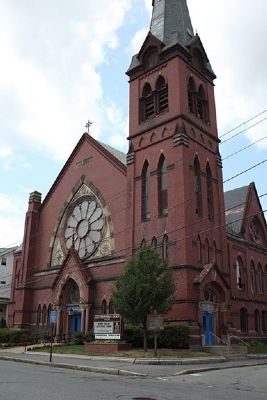Lowell in Middlesex County, Massachusetts — The American Northeast (New England)
Meetinghouse Hill
1630 - 1930
— American Presbyterian and Reformed Historical Site —
Erected 1930 by Massachusetts Bay Colony-Tercentenary Commission. (Marker Number 119.)
Topics and series. This historical marker is listed in these topic lists: Colonial Era • Native Americans. In addition, it is included in the American Presbyterian and Reformed Historic Sites, and the Massachusetts Bay Colony—Tercentenary Commission Markers series lists. A significant historical year for this entry is 1653.
Location. 42° 38.329′ N, 71° 18.802′ W. Marker is in Lowell, Massachusetts, in Middlesex County. Marker is at the intersection of Summer Street and Favor Street, on the right when traveling west on Summer Street. Touch for map. Marker is in this post office area: Lowell MA 01852, United States of America. Touch for directions.
Other nearby markers. At least 8 other markers are within walking distance of this marker. Lowell Manufacturing Company (approx. 0.3 miles away); Welcome to Lowell National Historical Park (approx. 0.4 miles away); Central Street (approx. 0.4 miles away); Homage to Women (approx. 0.4 miles away); J.C. Ayer & Company Laboratory (approx. 0.4 miles away); The Worker (approx. 0.4 miles away); W.A. Mack Building (approx. 0.4 miles away); Human Construction (approx. 0.4 miles away). Touch for a list and map of all markers in Lowell.
Regarding Meetinghouse Hill. Eliot Presbyterian Church (near the site of Meetinghouse Hill) is one of 445 American Presbyterian and Reformed Historical Sites registered between 1973 and 2003 by the Presbyterian Historical Society (PHS), headquartered in Philadelphia. Approved sites received a metal plaque featuring John Calvin’s seal and the site’s registry number (PHS marker location unknown).
The following text is taken from the Presbyterian Historical Society website:
Eliot Presbyterian Church, formed by the union of First Presbyterian Church and Eliot Union Congregational Church in 1955, is located on or near the site where Rev. John Eliot (1604-1690), Apostle to the Indians, preached to the Wamesit and Pawtucket (or Penacook) Indians in a log chapel. Eliot translated Scriptures into the Indian tongue and made many converts among the Pawtuckets. The present church, of French Gothic design, was built in 1874.
Also see . . . Historical Markers Erected by Massachusetts Bay Colony Tercentenary Commission (1930). Original 1930 publication by the Commonwealth of Massachusetts of Tercentenary Commission Markers, commemorating the three hundredth anniversary of the Massachusetts Bay Colony. (Submitted on August 6, 2011, by Russell Chaffee Bixby of Bernardston, Massachusetts.)

Photographed By Allen C. Browne, August 9, 2015
3. John Eliot
This portrait by of John Eliot an unknown artist hangs in the National Portrait Gallery in Washington, DC.
“No Puritan leader in seventeenth-century New England was more interested in the welfare of the region's Native American population than John Eliot. A graduate of Cambridge University, Eliot immigrated to Boston in 1631. While serving as the pastor of a church in Roxbury, Eliot began to search for ways to perform missionary work among the region's tribal communities. He studied the local Algonquian language, and by 1646 he was preaching to the native inhabitants in their own language.
In order to protect his potential Christian converts, he established the first of fourteen towns for so called ‘praying Indians’ in 1651. Perhaps his most extraordinary accomplishment, though, was the translation of the Bible into an Algonquian dialect a task that required Eliot to invent new words and new grammatical structures. Its publication in 1661 marked the first printing of a Bible in America.” — National Portrait Gallery
“No Puritan leader in seventeenth-century New England was more interested in the welfare of the region's Native American population than John Eliot. A graduate of Cambridge University, Eliot immigrated to Boston in 1631. While serving as the pastor of a church in Roxbury, Eliot began to search for ways to perform missionary work among the region's tribal communities. He studied the local Algonquian language, and by 1646 he was preaching to the native inhabitants in their own language.
In order to protect his potential Christian converts, he established the first of fourteen towns for so called ‘praying Indians’ in 1651. Perhaps his most extraordinary accomplishment, though, was the translation of the Bible into an Algonquian dialect a task that required Eliot to invent new words and new grammatical structures. Its publication in 1661 marked the first printing of a Bible in America.” — National Portrait Gallery
Credits. This page was last revised on September 7, 2018. It was originally submitted on August 6, 2011, by Russell Chaffee Bixby of Bernardston, Massachusetts. This page has been viewed 744 times since then and 46 times this year. Last updated on August 22, 2018, by Douglass Halvorsen of Klamath Falls, Oregon. Photos: 1, 2. submitted on August 6, 2011, by Russell Chaffee Bixby of Bernardston, Massachusetts. 3. submitted on October 24, 2015, by Allen C. Browne of Silver Spring, Maryland. • Bill Pfingsten was the editor who published this page.

